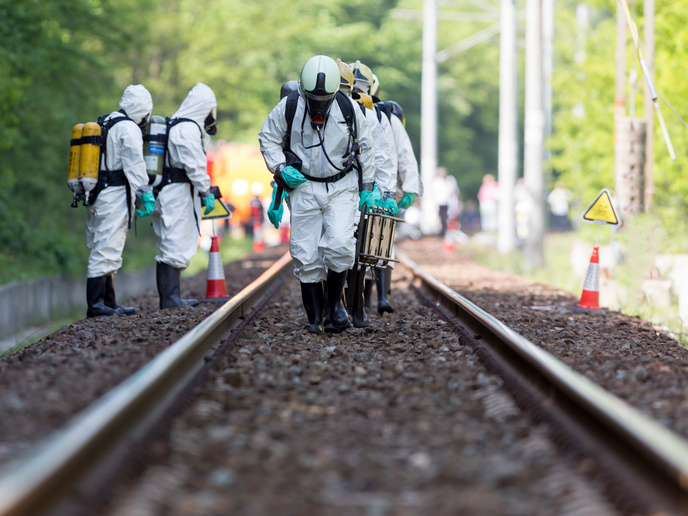The device enhancing our protection from chemical threats
Traditional chemical threat detectors, relying on ion mobility or mass spectrometry, are often bulky and expensive. While immunoassay-based detection offers more specificity, it can’t detect the full range of evolving threats. The EU-funded SERSing project has developed an artificial intelligence (AI)-enabled Raman-SERS handheld device, able to rapidly detect and identify liquid chemical hazards at low concentrations, with a gas equivalent under development. Geo-tagged data about the threat is transmitted to an online platform for swift response decisions. “Our device can be used by first responders, installed in fixed locations and mounted on robots or drones,” explains Tomas Rindzevicius, project coordinator. “When we started, AI-driven SERS data analysis was relatively new; it has proved to be an outstanding addition to our detection toolbox.” The project has resulted in the first successful gas-phase detection of chemical warfare agents (CWAs) using the surface-enhanced Raman spectroscopy (SERS) method, sparking several patent applications.
SERS: the benefits of more sensitive Raman spectroscopy
Raman spectroscopy (RS) is a chemical analysis technique used to identify unknown, suspicious solid or liquid compounds. While RS can’t be used to detect molecular traces, hazardous chemicals such as CWAs are extremely dangerous even at low concentrations. SERSing leveraged the SERS technique, using nanostructured materials to amplify the Raman signal, enabling detection and identification of chemicals at low concentrations. Machine learning (ML) methods were developed for spectral matching, exploring how neural networks could potentially analyse any RS or SERS data set to identify unknown compounds. The team evaluated the performance of different SERS substrates, gas/liquid sampling modules, and ML-driven data analysis in field trials using real CWAs. In the gas phase, SERSing tested detection of nerve agents, achieving detection limits as low as parts per million (ppm) for Tabun and parts per billion (ppb) for Mustard. In the liquid phase, project partner Serstech’s handheld Raman device successfully detected: nerve_agent (tabun), sarin, mustard gas, V-series agents, dimethyl methylphosphonate and the nerve agent simulant, dimethyl nitrophosphonate. “A major milestone was the detection of A234 (Novichok) in various real-life mixtures, like nose-spray, down to concentrations of 0.01 %, two orders of magnitude lower than achievable with conventional Raman devices,” adds Rindzevicius. The ML techniques outperformed the standard compound identification methods and concentration predictions currently used in RS, while the neural networks were able to detect and quantify nitroaromatic explosives.
Real-time geolocation
The SERSTECH device is equipped with geolocation capabilities, tracking the location of where samples are taken, along with their movement – critical in field operations. The device can also be remotely connected, transmitting data to a central control system or cloud-based platform, and multiple devices can work in coordination, providing a comprehensive threat overview. “This real-time monitoring enhances decision-making, allowing teams to quickly respond, managing resources and containing threats more efficiently. The system can also be trained to detect emerging hazards as they develop, improving overall situational awareness and safety,” says Rindzevicius. SERSing’s achievements align with the needs identified by the EU’s ENCIRCLE initiative for better hazardous chemicals detection, identification, modelling, risk assessment and impact reduction. According to the International Forum to Advance First Responder Innovation (IFAFRI), first responders have consistently called for affordable innovative tools that can rapidly detect, identify and analyse threats and hazards. The SERS substrates developed by SERSing are already used by project partner Serstech in their SERS kit, which can be used to detect and identify various chemical threats in liquid samples.
Keywords
SERSing, chemical, threat, Raman spectroscopy, machine learning, Novichok, hazards, warfare



